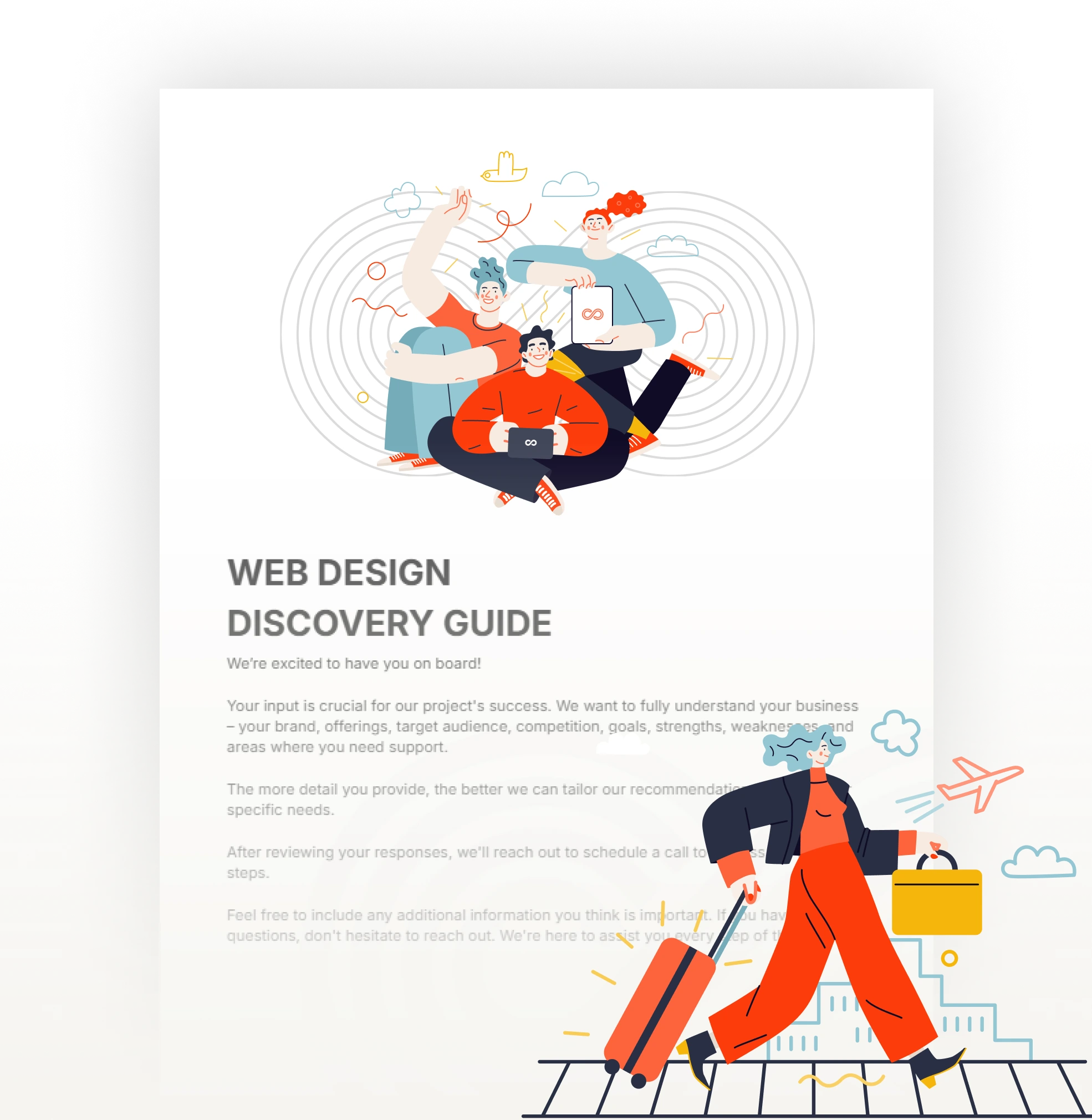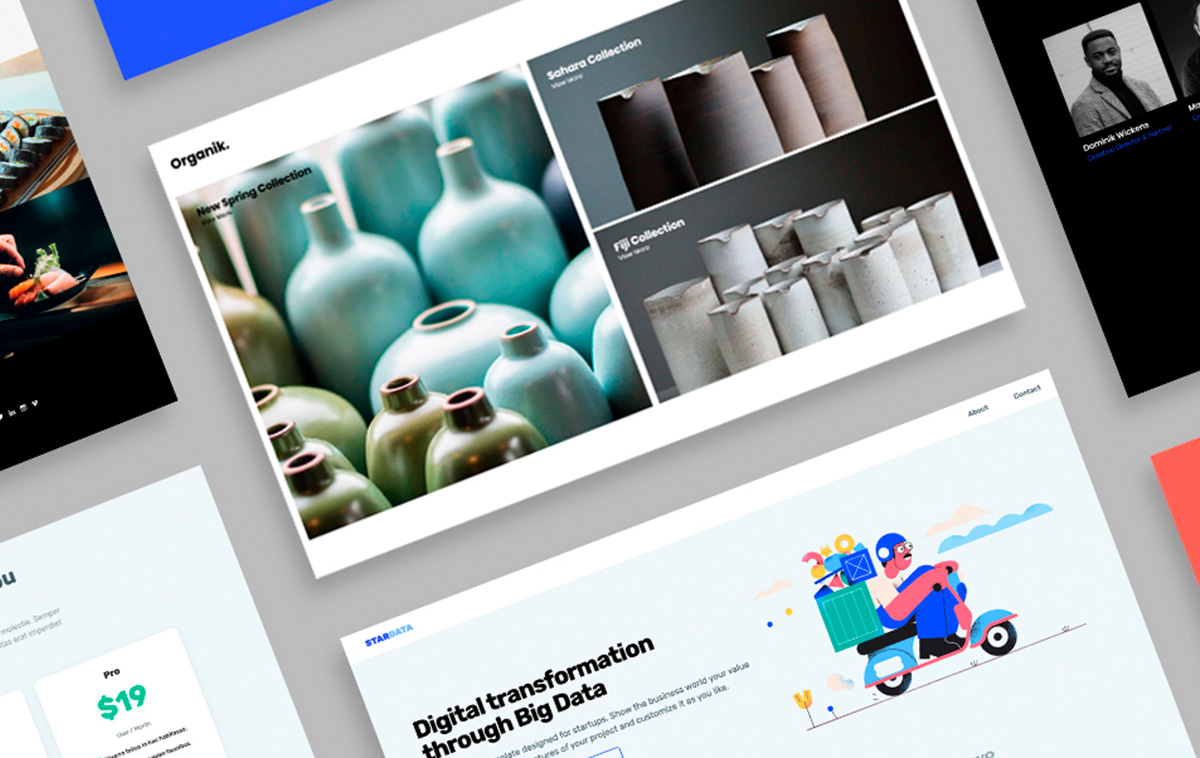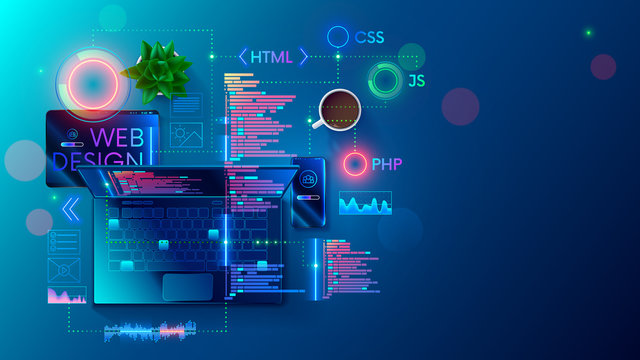Professional Aligned Position Web Design: Custom Websites Tailored to Your Business Needs
Professional Aligned Position Web Design: Custom Websites Tailored to Your Business Needs
Blog Article
The Most Effective Kinds Of Website Design to Improve Customer Experience and Engagement
In the ever-evolving landscape of digital communication, the performance of website design substantially impacts individual experience and interaction. Different design methods, such as minimal, responsive, and interactive designs, each offer unique benefits that can satisfy diverse user requirements. Comprehending which kinds of website design ideal serve these objectives can be critical for companies aiming to boost consumer satisfaction and retention. The concern stays: which layout components genuinely resonate with users and foster significant engagement? The expedition of these principles discloses crucial understandings that might redefine your strategy to website design.
Minimal Web Style
As electronic landscapes end up being increasingly messy, minimal website design has become an effective technique to boosting individual experience. This design ideology focuses on simpleness, focusing on important components while getting rid of unnecessary distractions. By using ample white space, straightforward navigating, and a limited shade scheme, minimal layout promotes clarity and guides customer interest to crucial content.
The core concept of minimal Web design is to produce a seamless communication for users. By reducing cognitive lots, customers can swiftly comprehend details without feeling bewildered. This straight technique not just boosts functionality yet also encourages interaction, as visitors are most likely to discover a site that is easy and aesthetically appealing to browse.
Additionally, minimalist style commonly highlights typography and imagery, making use of these elements strategically to share messages properly. This focus on essential parts can improve brand identification and produce an unforgettable user experience. Basically, minimalist Web design is not just a pattern; it is a thoughtful approach that identifies the relevance of user-centered design. By stripping away supplementary elements, developers can produce a more appealing, effective, and pleasurable Web experience for all individuals.
Responsive Website Design
In today's diverse electronic setting, receptive website design has come to be crucial for developing a seamless user experience across a wide variety of tools. As individuals accessibility websites on mobile phones, laptop computers, desktops, and tablet computers, the ability of a web site to adjust its layout and content to different display dimensions and resolutions is vital.
Responsive website design uses adaptable grids, pictures, and CSS media queries to make certain that Web material exists optimally, regardless of the gadget used. This strategy not just improves the visual allure of an internet site yet also dramatically boosts use. Users are more probable to involve with a website that provides a constant experience, as it gets rid of the irritation of needing to zoom in or scroll excessively.
By taking on receptive style, organizations can boost their visibility and get to a more comprehensive target market. In summary, receptive Web style is an essential practice that boosts user experience, engagement, and general complete satisfaction.
Interactive Web Design
Responsive Web layout prepares for improving user experience, but interactive Web layout takes this a step even more by engaging customers in a more vibrant method - Aligned Position Web Design. By integrating aspects such as computer animations, clickable prototypes, and real-time comments, interactive website design captivates users, drawing them right into a richer surfing experience
This method not only fosters involvement however likewise encourages users to discover content proactively rather than passively eating it. Methods such as gamification, where individuals gain rewards for finishing jobs, can dramatically boost the moment invested on a site and boost overall fulfillment. Moreover, interactive attributes can simplify complex details, making it a lot more enjoyable and absorbable.

Incorporating interactive design elements can likewise lead to greater conversion prices, as users are a lot more most likely to engage with a website that actively includes them. Aligned Position Web Design. Eventually, interactive Web layout changes customer experiences right into unforgettable trips, making sure that visitors return time after time
Apartment Layout
Identified by its minimalistic technique, level style stresses simpleness and capability, removing unnecessary elements and concentrating on essential functions. This layout philosophy focuses on functionality, making sure that customers can browse interfaces with convenience and performance. By using a clean aesthetic, flat style eliminates the clutter frequently found in much more ornate designs, thus boosting customer emphasis on content and capability.
The hallmark of level style exists in its use of bold shades, simple typography, and geometric shapes. These elements add to an aesthetically attractive interface that is both contemporary and friendly. Additionally, level design fosters a feeling of clearness, permitting customers to determine vital actions and details without interruption.
In addition, level design is especially additional hints efficient in responsive Web style, as its simplicity converts well throughout different tools and display dimensions. The absence of complex textures and gradients minimizes filling times, which is critical for keeping customer interaction. As electronic landscapes remain to evolve, flat style continues to be a relevant option for creating straightforward sites that boost general experience. By concentrating on essential attributes, flat layout not just meets user requirements but likewise urges smooth interaction, making it an essential element of effective website design strategies. Recommended Site
Flexible Website Design
Adaptive website design tailors the user experience by producing several repaired formats tailored to different screen sizes and devices. Unlike receptive style, which fluidly adjusts a solitary design, flexible design utilizes distinct layouts for details breakpoints, guaranteeing ideal discussion on different platforms. This method allows developers to concentrate on the special characteristics of each gadget, boosting use by supplying exactly what customers need based upon their context.
One of the primary advantages of adaptive Web layout is its ability to maximize lots times and efficiency. By offering tailored material and images that fit the user's device, websites can decrease information usage and boost loading speeds. This is especially useful for users with slower links or limited information strategies.

Furthermore, flexible layout assists in an extra regulated and consistent branding experience. Given that developers develop numerous layouts, they can ensure that the aesthetic elements align with the brand name's identification across different platforms - Aligned Position Web Design. This causes a cohesive individual experience, enhancing interaction and advertising customer retention
Final Thought
Minimal design promotes clearness and emphasis, while responsive layout makes sure versatility throughout different gadgets, promoting access. Jointly, these design approaches add to the development of user-friendly atmospheres that not just boost complete satisfaction yet likewise drive greater conversion prices, underscoring their crucial relevance in modern Web style techniques.

Minimalist style promotes quality and focus, while responsive layout makes sure versatility across various gadgets, advertising accessibility. Jointly, these design comes close to add to the creation of easy to use atmospheres that not only enhance complete satisfaction however likewise drive higher conversion rates, underscoring their critical relevance in modern Web design approaches.
Report this page